Design thinking combines both critical and creative thinking to produce innovative and problem-solving ideas through 5 stages: Empathize, Define, Ideate, Prototype, and Test.
So how does design thinking apply to animation production?
Scroll down to read about the 5 stages of design thinking in animation production.
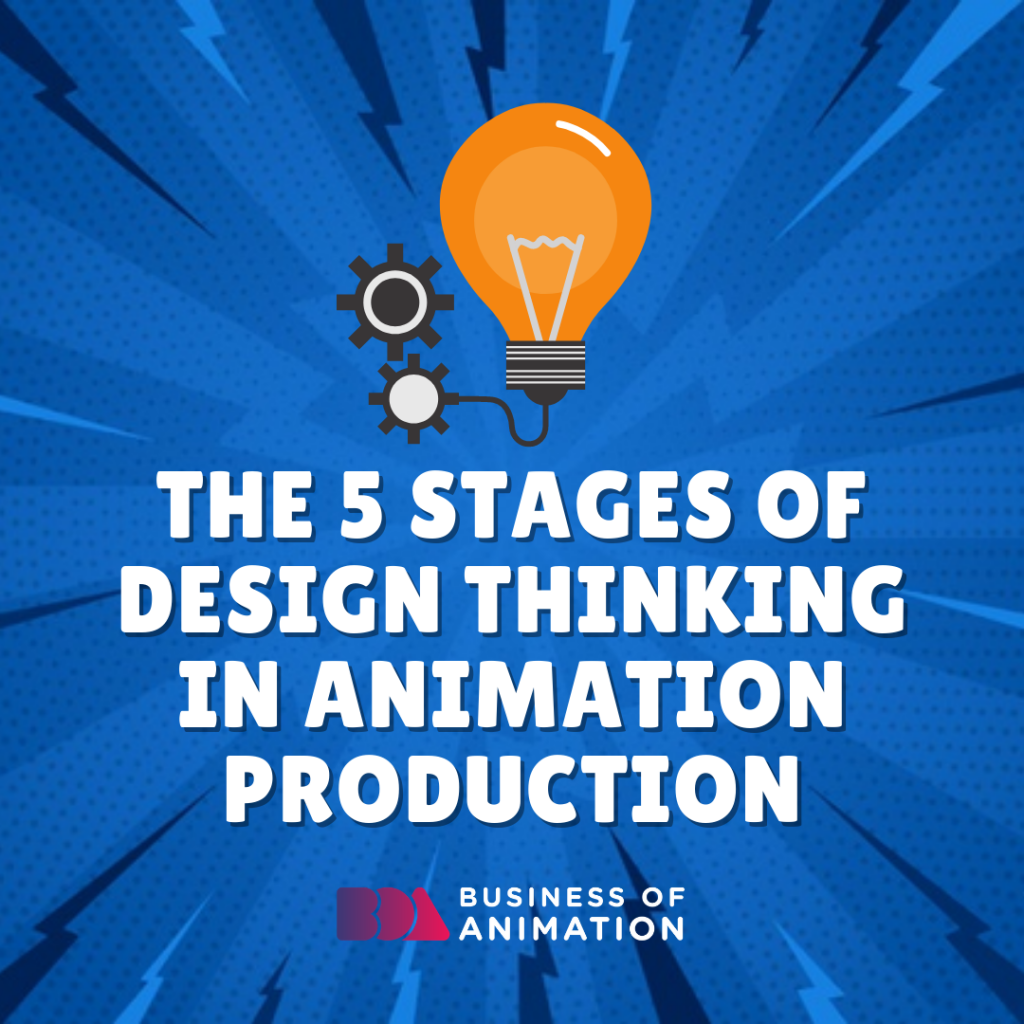
1. Empathize
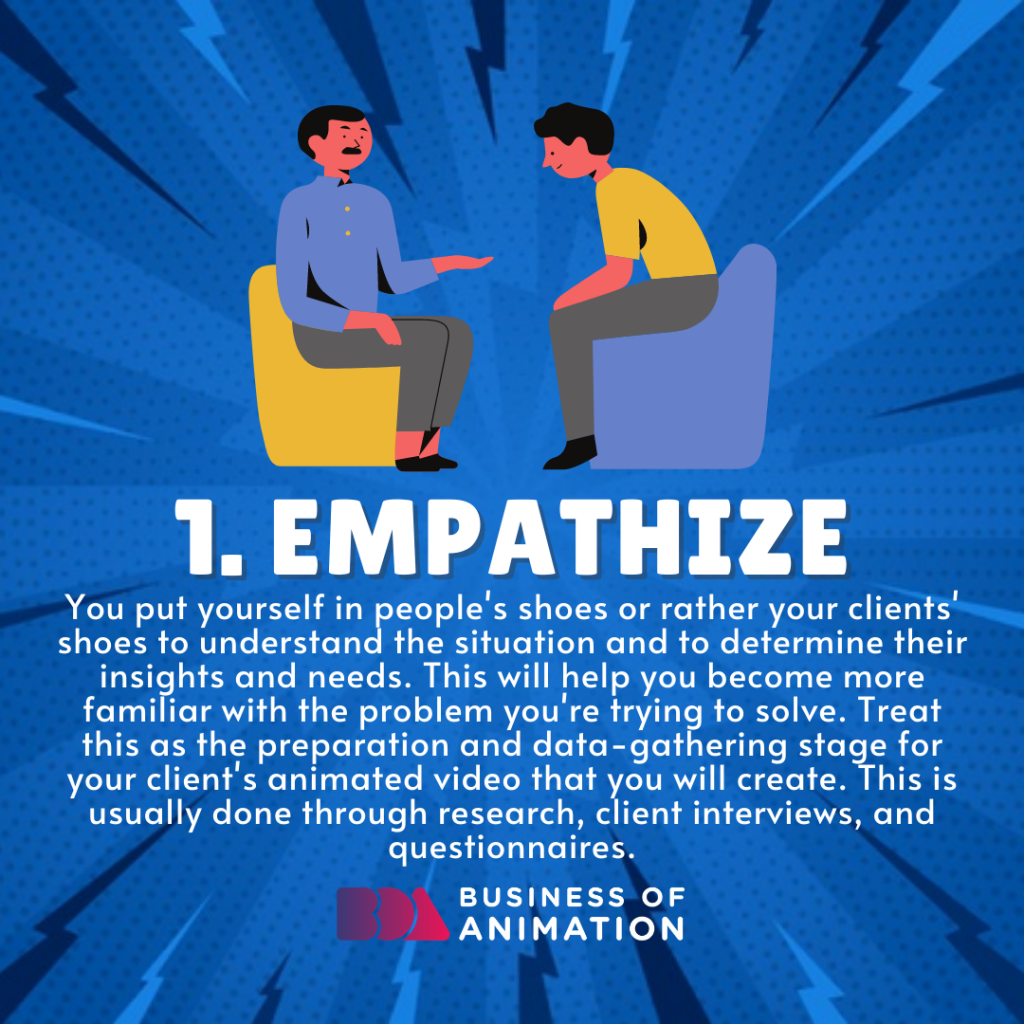
You put yourself in people's shoes or rather your clients' shoes to understand the situation and to determine their insights and needs. This will help you become more familiar with the problem you're trying to solve. Treat this as the preparation and data-gathering stage for your client's animated video that you will create. This is usually done through research, client interviews, and questionnaires.
2. Define
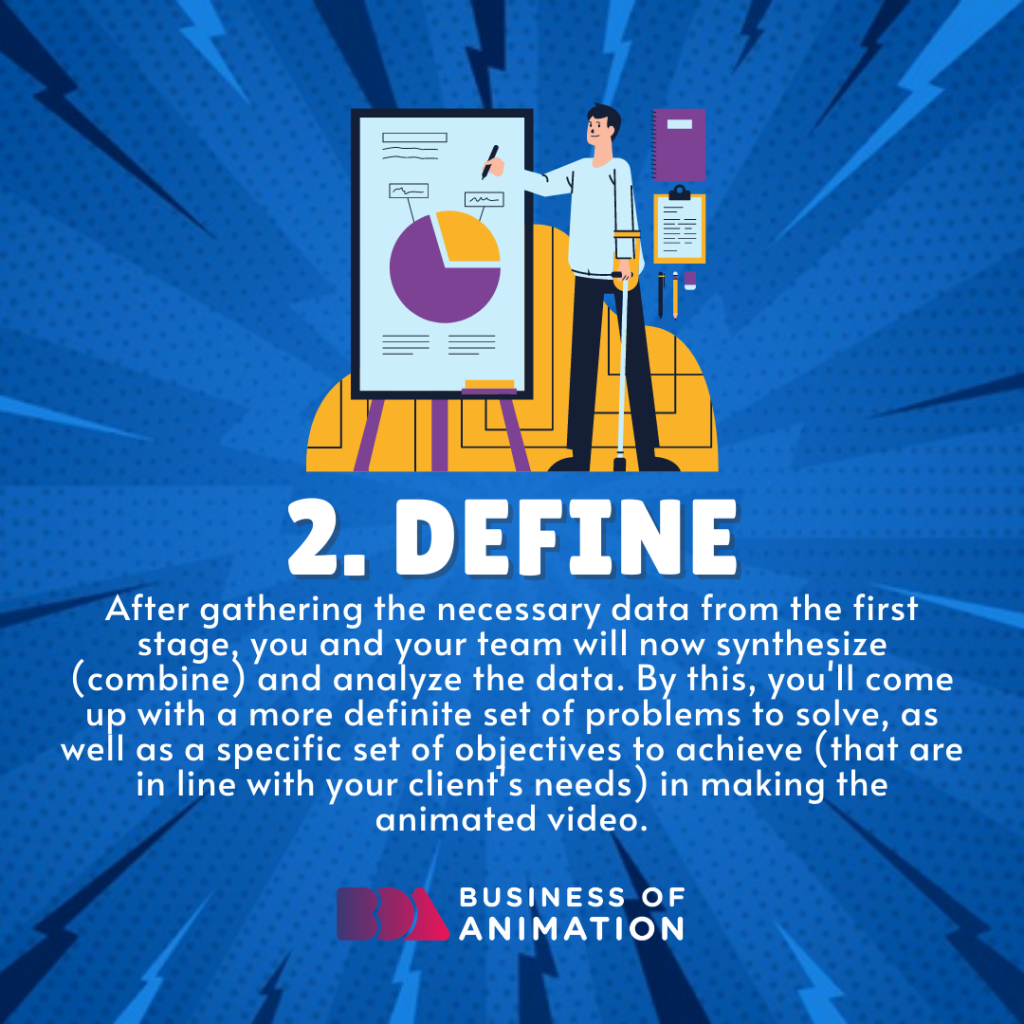
After gathering the necessary data from the first stage, you and your team will now synthesize (combine) and analyze the data. By this, you'll come up with a more definite set of problems to solve, as well as a specific set of objectives to achieve (that are in line with your client's needs) in making the animated video.
3. Ideate
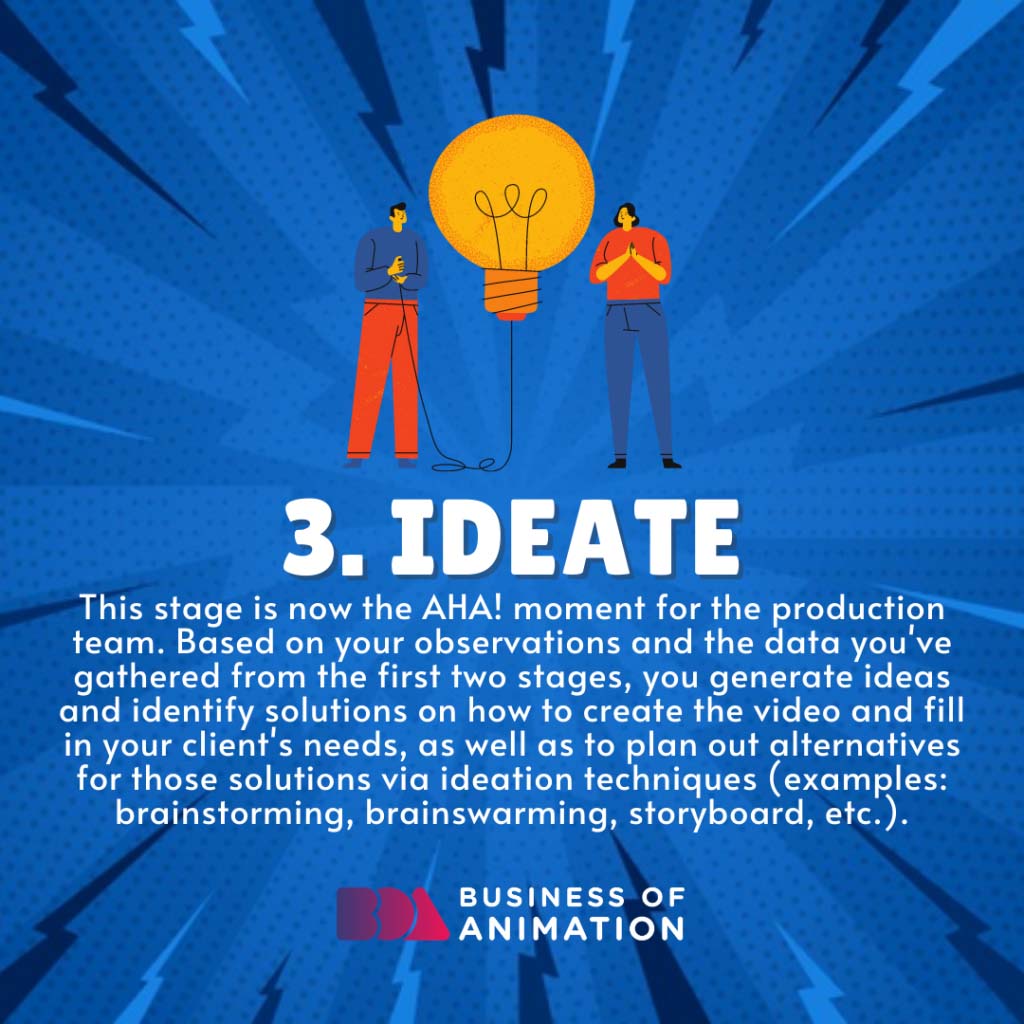
This stage is now the AHA! moment for the production team. Based on your observations and the data you've gathered from the first two stages, you generate ideas and identify solutions on how to create the video and fill in your client's needs, as well as to plan out alternatives for those solutions via ideation techniques (examples: brainstorming, brainswarming, storyboard, etc.).
4. Prototype
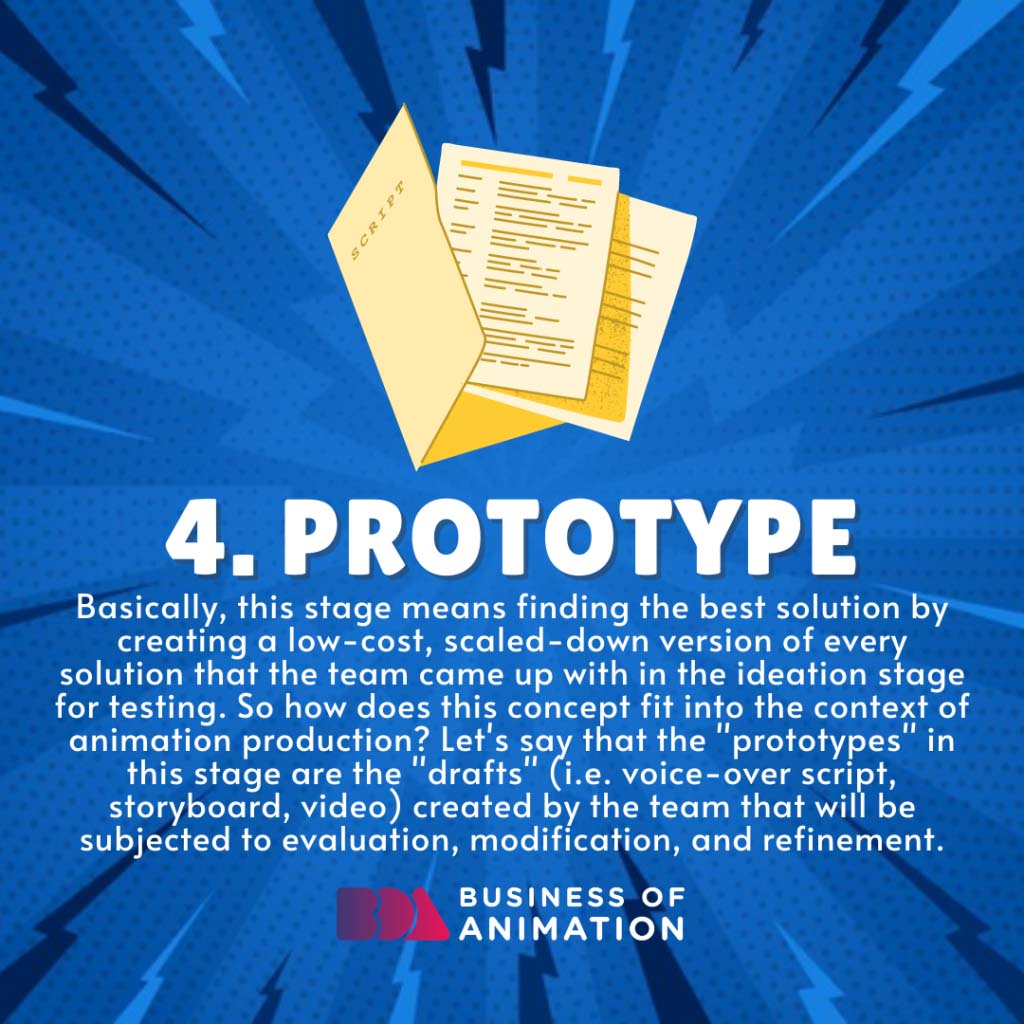
Basically, this stage means finding the best solution by creating a low-cost, scaled-down version of every solution that the team came up with in the ideation stage for testing. So how does this concept fit into the context of animation production? Let's say that the "prototypes" in this stage are the "drafts" (i.e. voice-over script, storyboard, video) created by the team that will be subjected to evaluation, modification, and refinement.
5. Test
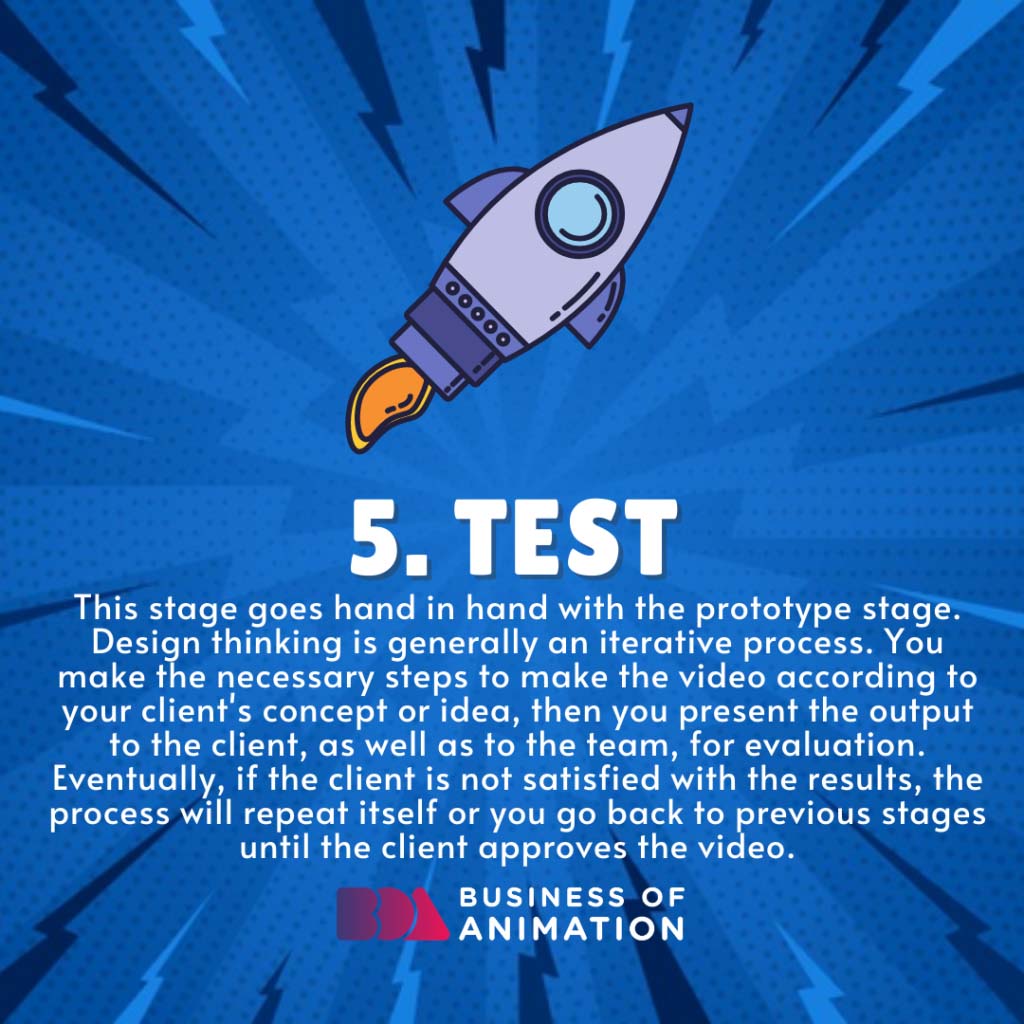
This stage goes hand in hand with the prototype stage. Design thinking is generally an iterative process. You make the necessary steps to make the video according to your client's concept or idea, then you present the output to the client, as well as to the team, for evaluation. Eventually, if the client is not satisfied with the results, the process will repeat itself or you go back to previous stages until the client approves the video



